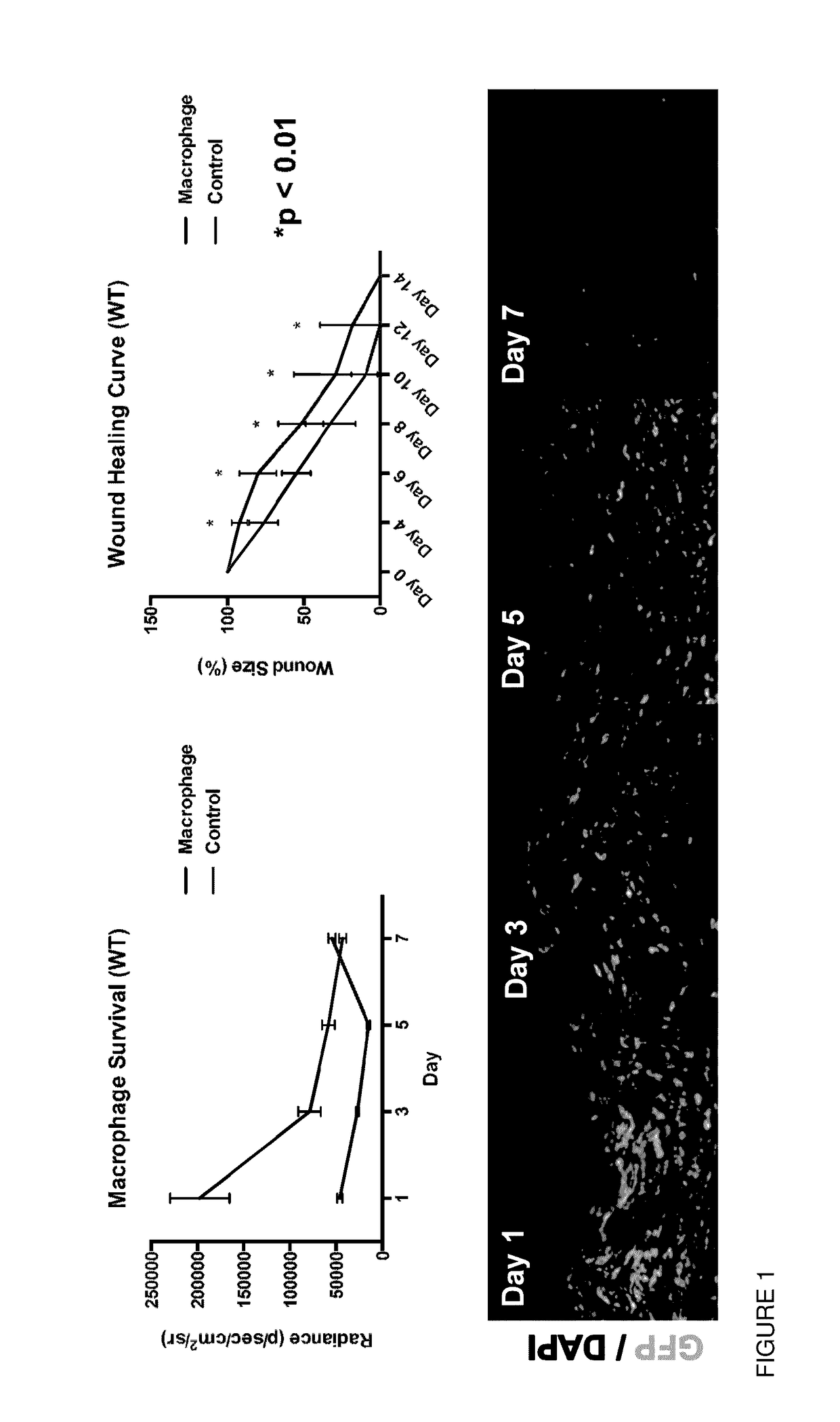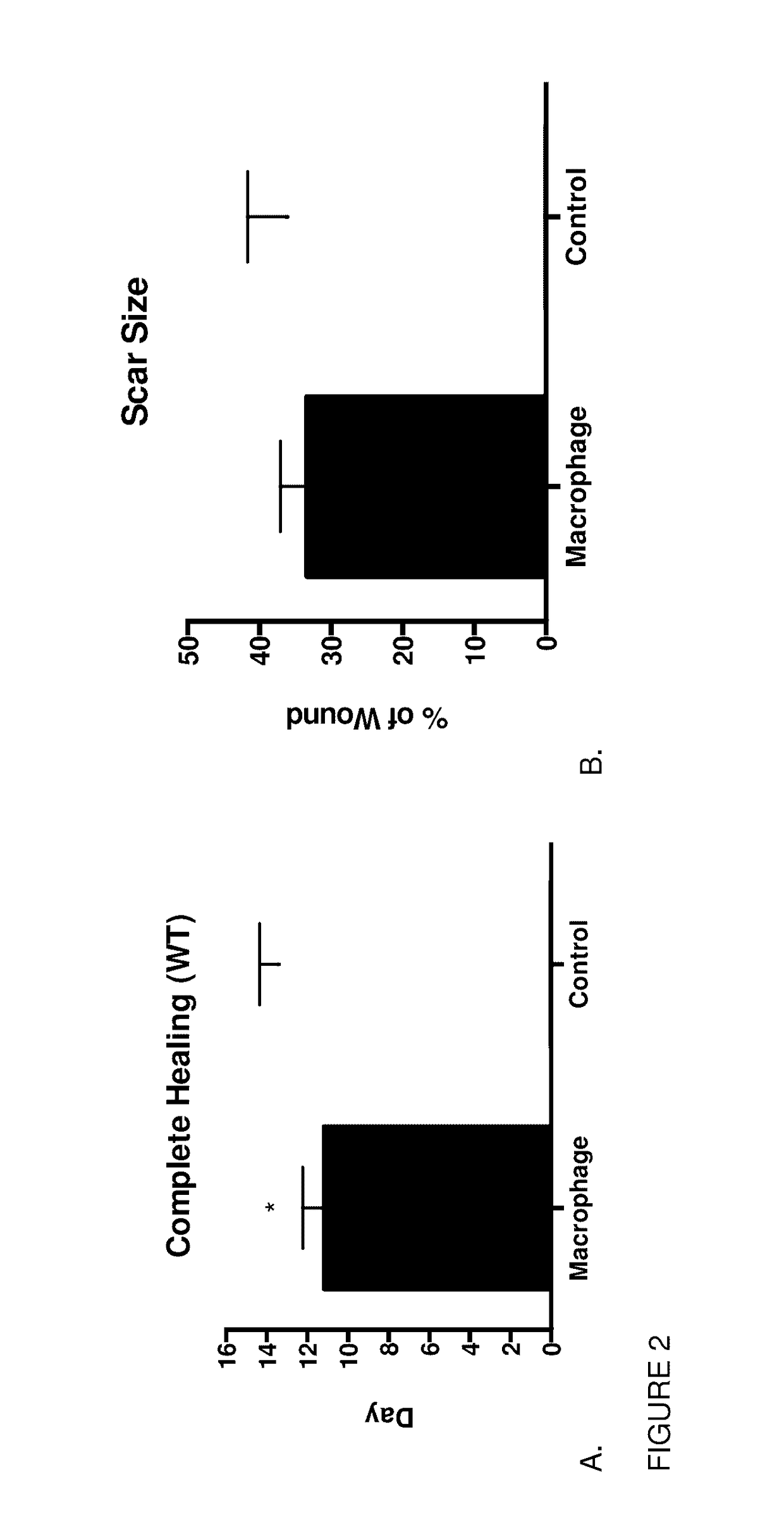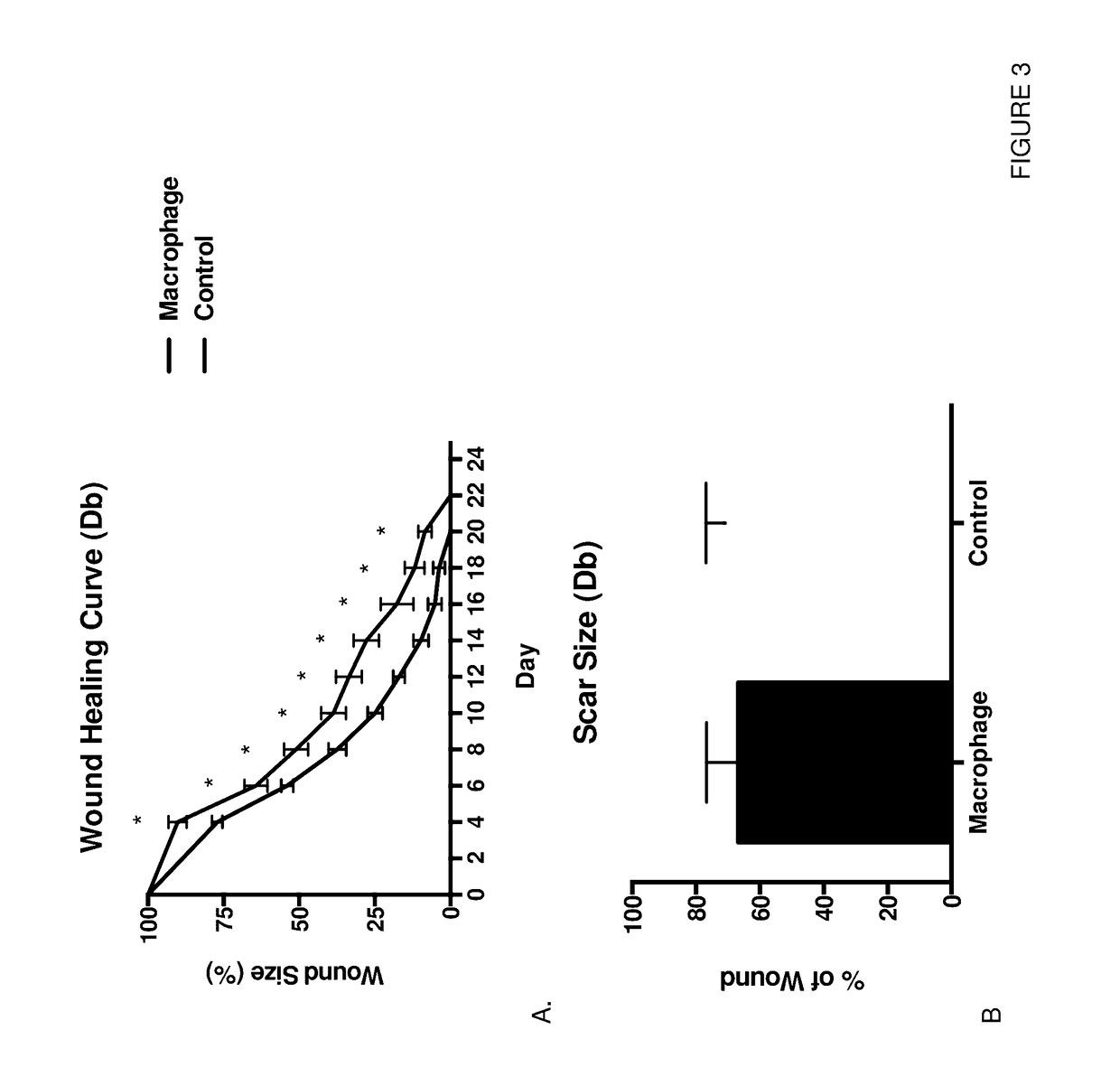Macrophage or monocyte enhanced wound healing
a technology of macrophages and monocytes, applied in the field of macrophages or monocyte enhanced wound healing, can solve the problems of poor tissue oxygen delivery, increased risk of infection, and impaired tissue blood flow, so as to enhance the healing rate, and enhance the healing rate
- Summary
- Abstract
- Description
- Claims
- Application Information
AI Technical Summary
Benefits of technology
Problems solved by technology
Method used
Image
Examples
example 1
[0089]Carbohydrate-based hydrogels were fabricated using pullulan (Mx 200,000, Hayashibara
[0090]Laboratories, Okayama, Japan). Collagen was prepared from rat tail collagen type 1 solution (Sigma-Aldrich, St. Louis, Mo.). Cross-linking was performed with sodium trimetaphosphate (STMP, Sigma-Aldrich) under alkaline conditions with sodium hydroxide (Sigma-Aldrich). Potassium chloride salt (KCl, Sigma-Aldrich) was used as a porogen for in-gel crystallization. 100% ethyl alcohol (Sigma-Aldrich) was used for hydrogel dehydration. Pullulanase (Sigma-Aldrich) was prepared in a concentration of 4U / mL in phosphate buffered saline (PBS) (Gibco, Grand Island, N.Y.). Collagenase A (Roche, Indianapolis, Ind.) was prepared in a concentration of 2 mg / mL in PBS. Methylene blue (Sigma-Aldrich) was used to quantify STMP cross-linking per previously published methods. All aqueous solutions were prepared in deionized water. All compounds and reagents were used without further purification.
[0091]Hydrogel...
PUM
| Property | Measurement | Unit |
|---|---|---|
| Fraction | aaaaa | aaaaa |
| Diameter | aaaaa | aaaaa |
| Diameter | aaaaa | aaaaa |
Abstract
Description
Claims
Application Information
 Login to View More
Login to View More - R&D
- Intellectual Property
- Life Sciences
- Materials
- Tech Scout
- Unparalleled Data Quality
- Higher Quality Content
- 60% Fewer Hallucinations
Browse by: Latest US Patents, China's latest patents, Technical Efficacy Thesaurus, Application Domain, Technology Topic, Popular Technical Reports.
© 2025 PatSnap. All rights reserved.Legal|Privacy policy|Modern Slavery Act Transparency Statement|Sitemap|About US| Contact US: help@patsnap.com



